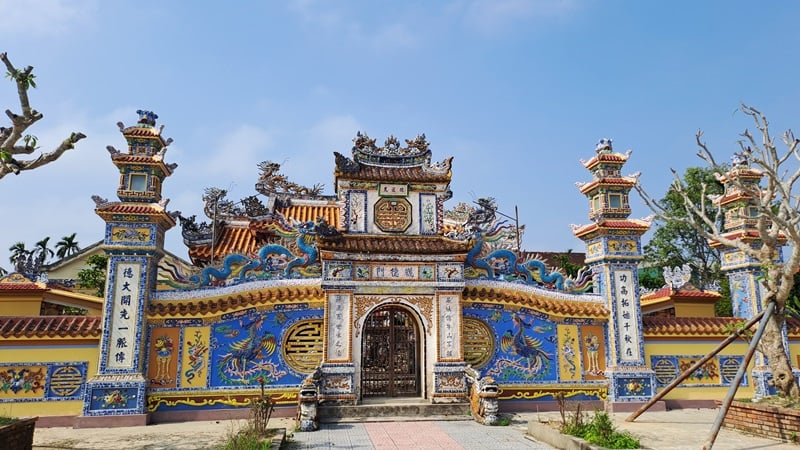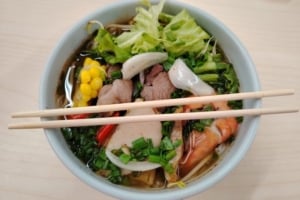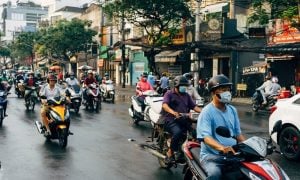Vietnamese traditional culture has been formed and developed over many generations. It exists in the daily life of each person and the whole country, creating beautiful differences that attract most visitors.
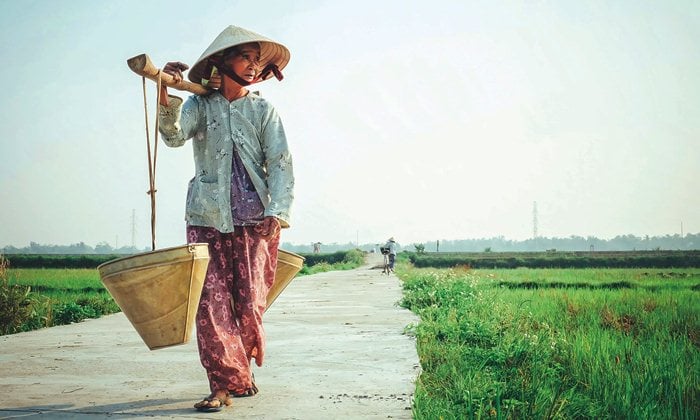
From family to society, from ancestor worship to the Hung King ceremony, and from the dressing ways to unique festivals have contributed to making Vietnam a country containing multi-colorful values of traditional culture.
In this article, Vietnamdrive would like to give you an overview of the top Vietnamese cultural values.
Now, let’s explore together!
1. Traditional cultural values remain in Vietnamese families
Vietnamese people always put the family at the center of most thoughts and work in daily life. They think that family is the core of society and the foundation of cultural preservation. The family contributes to the development and civilization of the whole country.

In the old sense, children are responsible for nurturing their old parents. Therefore, most people desire to live with or near their parents’ house so that they can take care of their father and mother.
Also, in the past, many people left their jobs or high-ranked positions far away to live in their hometowns. Thus, the traditional Vietnamese family has formed a communal way of life, with three or four generations living together.
Although nuclear families have developed recently, many traditional families remain in this country.
Nowadays, the sense of living with or near their parents has changed. Lots of young people are free to travel, looking for their own sky to have the opportunity to develop their talents and careers. However, the awareness of caring parents still strongly influences each person’s life.
Filial piety is at the forefront of Vietnamese morality. Everyone thinks that if a person is not good with parents, that one cannot be kind to anybody.
In addition to maintaining respect, filial piety toward parents is the way to avoid causing them upset. Children must think of ways to have a suitable career and success to satisfy their parent’s wishes and not do bad things to their family and society.
Thus, the traditional family values have made the Vietnamese culture more colorful and enduring.
When you have the opportunity to travel to Vietnam, take a little time to visit a few traditional families to understand more about the cultural beauty of families in Vietnam.
2. Ancestor worship is a vital cultural feature
The custom of worshiping ancestors, including grandparents and parents of each family, has been shaped in Vietnam for a long time.
Vietnamese ancestor worship is a respectful act that expresses the spirit of not forgetting one’s roots, which is also an obligation of all human beings.

The family members often organize an annual celebration to commemorate the deceased. It is also a time when descendants gather together to show respect for their ancestors.
Therefore, when visiting any family in Vietnam, you will quickly recognize that the ancestor altar is a very solemn place, usually in the middle of the house.
Be careful not to stand with your back to this altar! Not to sit in front of the altar even though there is a chair facing the altar. Please sit aside to respect their family and ancestors, creating a high appreciation in Vietnamese culture.
Worshiping in families forms a ceremony in the country, which is the anniversary of Hung Vuong King.
On the tenth day of the third lunar month of every year, Vietnam holds a national ceremony to pray to the Hung king. The activity mainly happens at Hung Temple in Phu Tho province, Vietnam.
Most people celebrate the Hung King festival to show gratitude to the creator of the country. This cultural beauty is an indispensable part of the spiritual life of the Vietnamese people.
Although worshipping ancestors and the Hung King is a traditional custom and a valuable belief, not a Vietnamese religion with enough teachings, it is essential in forming social awareness. This cultural feature has existed and strongly developed in Vietnamese life today.
3. Beliefs live in Vietnamese culture
Besides the culture of ancestor worship, the folk beliefs of the Vietnamese people specialize in praying to the tutelary deities, which has been almost in the ancient villages in Vietnam.
Village temples represent a traditional cultural practice that shows respect and gratitude to tutelary spirits who have contributed merit to the village or the nation.
Many ancient craft villages in Vietnam also customarily worshiped the first talents who established jobs for villagers. For example, temples were built in the places where wooden furniture was made at Nhi Khe (Ha Tay, Hanoi), bronze casting was done in Hue City, and craft shoes were made in Chan Hai Hung. Folk opera in North Vietnam and Cai Luong in the South also worshiped the passing profession.
As a result, when you visit several rural areas in Vietnam, you can easily recognize the ancient temples that preserve each village’s spiritual value.
In these sites, people often hold regular folk celebrations annually. On the occasion of the start of a new crop, farmers usually carry out a “Hạ Điền” ceremony to pray for good weather and healthy trees. People organize a new rice ceremony when the rice has been harvested, usually in the ninth lunar month.
This custom demonstrates the ethic of “drinking water needs to be thankful for the source” in the lives of the Vietnamese people. It is morally good if they remember their ancestors’ merit in the family line; in the villages, the goodness of tutelaries is recorded.
4. Festive culture also forms societal values in Vietnam
The festival is part of the cultural color of Vietnamese spiritual life. It is a place for everyone in the community to exchange feelings with each other, helping to strengthen the communal cultural values in Vietnam and the spirit of mutual support.
Plenty of celebrations are organized all over Vietnam, spreading throughout almost every month of the year.
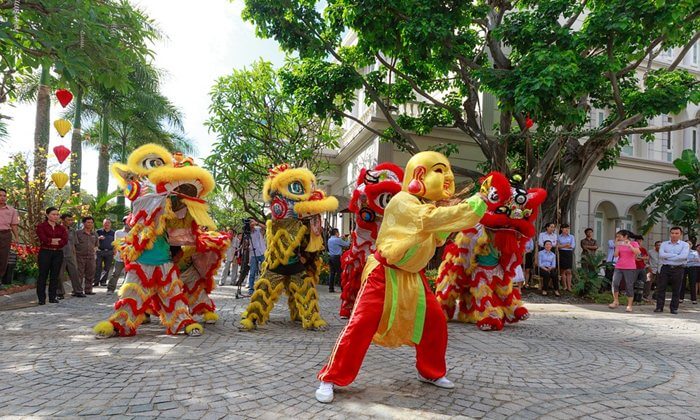
Spring is the main festive season. Lunar New Year (Tet Nguyen Dan) is the most important traditional festival of Vietnamese people. During the Tet holidays, everyone worships their ancestors and rests after a year of hard work.
The significant traditional festivals in Vietnam also include:
- The Hung King celebration on the 10th of the third lunar month each year
- The Giong festival on the 9th of the ninth lunar held in Gia Lam (Hanoi)
- The Huong Pagoda festival takes place for a long time, from the 6th of the first lunar month to the end of the third lunar month (at Huong Pagoda – My Duc, Hanoi)
- The fishing ceremony in Phu Vang (Thua Thien Hue) on the 12th of the first lunar month
- The typical Mid-Autumn Festival on the 15th of the eighth lunar month when most children wait for sweet moon cakes and fun toys
The festivals strongly promote and develop the communal culture. Also, these activities strengthen each person’s love for their origins when immersed in the sacred atmosphere of the celebration.
Participating in one of the traditional festivals is also a perfect way to explore Vietnamese culture. So, when you plan your itinerary for Vietnam, you should note the above holidays.
5. Rich culinary enriches Vietnamese culture
Accompanying a long and diverse culture is a rich and unique culinary scene. From the North to the South, from the mountainous places to the islands in Vietnam, the Vietnamese people live in various geographic regions, so the cuisine creates a distinct nuance.
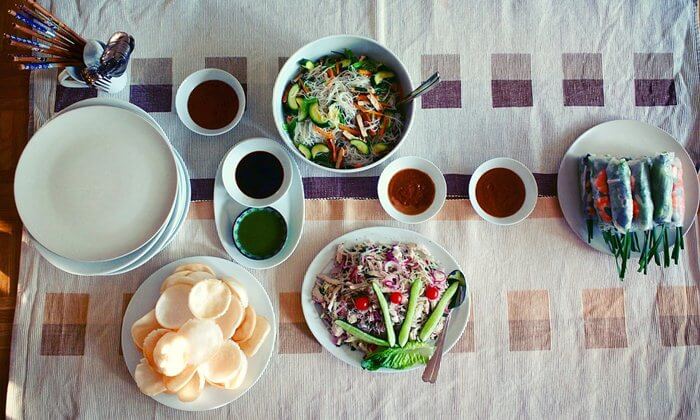
Many dishes have become specialties in Vietnam and are well-known in the country and the world, such as Spring Rolls, Pho Hanoi, Bun Bo Hue, egg rolls (Cao Bang, Lang Son), roasted duck with honey, sour noodle soup, bee-worm porridge, and sticky rice of Muong.
Northern Vietnamese cuisine has a salty, rich taste and is less spicy, fatty, or sweet than other regions. The Northern people like to add light fish sauce and shrimp paste and use various easy-to-find vegetables and freshwater fish, shrimp, crabs, and clams.
Many visitors appreciate Hanoi cuisine, claiming that it represents the most typical culinary quintessence of North Vietnam. You can find tasty dishes of pho, bun thang, bun cha, gifts (such as Com Vong), spring rolled of Thanh Tri, and special spices (such as Ca Cuong oil and Lang basil).
Central cuisine is known for its hot taste, with all its unique properties reflected in a distinct flavor, spicier and saltier dishes than northern and southern foods, and colors mixed with different styles but inclined to red and dark brown.
Typically, Hue cuisine is influenced by royal culinary styles, so it is sophisticated in processing and presentation. Each ingredient is processed very differently for various dishes. This feature also creates an elegant style of Hue people.
Southern food tends to be sweet and sour, influenced by Chinese, Cambodian, and Thai cuisines. In keeping with their own cooking habits, most chefs often add sugar and coconut milk.
Southern cuisine also uses ingredients from brackish and saltwater that are different from those in the North (fish, shrimp, crabs, sea snails). Many rustic dishes have become specialties, such as a rice-field mouse with coconut water, cobra for mung porridge, coconut worm, and grilled snakehead fish.
Also, tasting the local food is one of the exciting activities in Vietnam that most tourists like to do when traveling to this country. Will you do it?
6. The beauty of dress culture goes with the Vietnamese
With 50 ethnic groups in Vietnam, each group’s clothing contributes to the diversity and colorfulness of Vietnamese cultural values in costumes.
When you have the opportunity to visit the mountains of northern Vietnam, you will not be able to ignore the colorful brocade shirts and skirts of the local minorities.
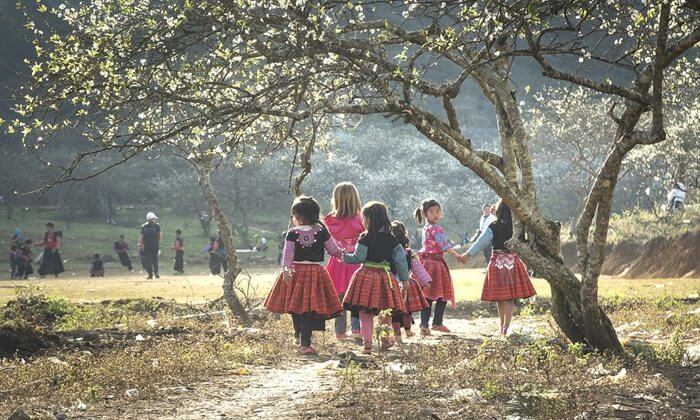
The patterns on the clothes and scarves reveal the skillfulness and industriousness of the woman. To weave beautiful motifs, they must implement unique techniques to make the product more appealing.
We also see beautiful traditional costumes of the Northern Plain, such as four-flap or five-flap dresses. Although these dresses are no longer popular in modern life, many artists in Hanoi, Nghe An, or Thanh Hoa Province often wear them for performances when singing folk songs.
Next is the typical Ao Ba Ba in South Vietnam, which becomes neat and more straightforward than other traditional clothes in the northern areas to better suit activities in the rice fields.
Specifically, when visiting Vietnam, most visitors are impressed with the traditional Vietnamese dress – Ao Dai. The current ao dai has a few changes, but it still carries the elegant charm of the female people.
The Ao Dai becomes a symbol of the Vietnamese woman’s beauty. You can find it everywhere. High school girls, hotel receptionists, office workers, and female teachers can appear in the images of Ao Dai, which are still present in Vietnamese life.
Although most people wear trendy clothes in modern style, Ao Dai still lives in almost every place of daily activities. However, for other traditional clothes, we can see them at festivals and Tet holidays.
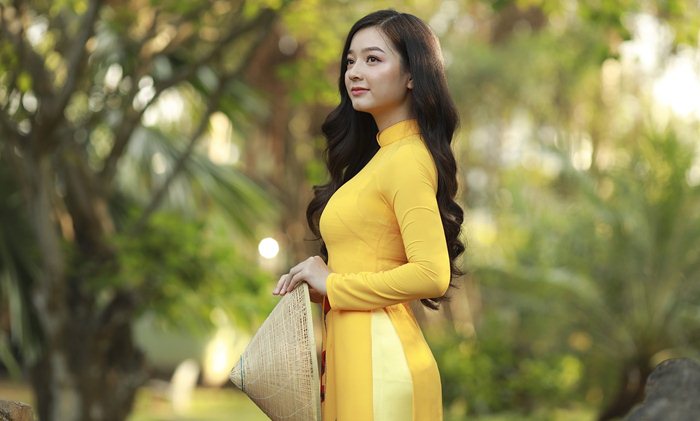
>> You may like to see the famous symbols in Vietnam.
Vietnamese culture encompasses many aspects of life. However, we only point out the six most prominent features of its general cultural values.
These cultural highlights can be seen as the typical factors that form other unique characteristics you can encounter when coming to Vietnam.
With the above information, we hope you will gain a fundamental knowledge of Vietnamese culture and feel more confident when traveling, working, or living in this beautiful country.

